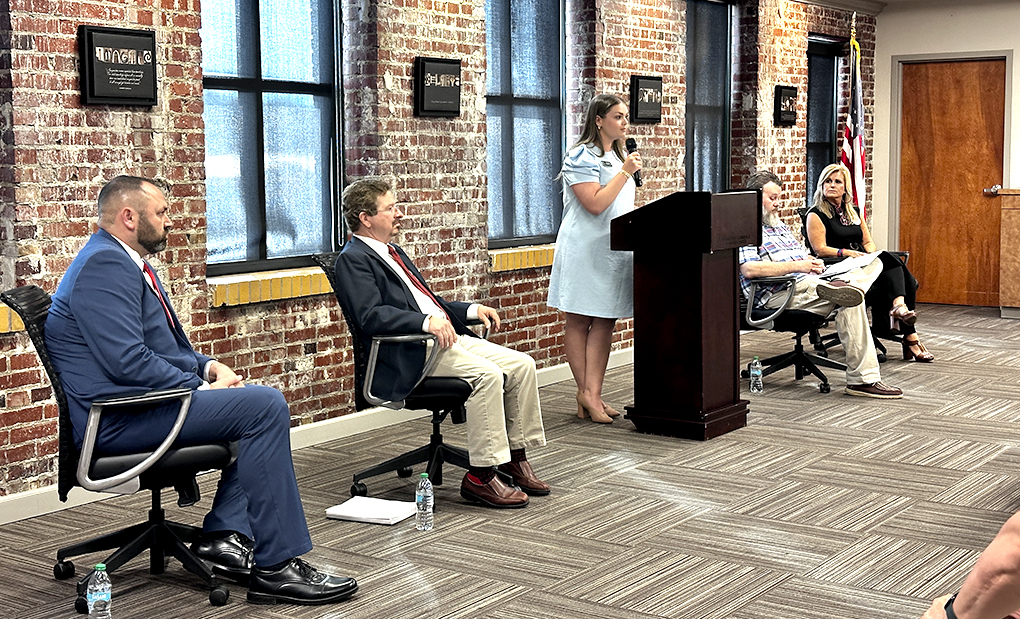EDITORIALS: Government’s true colors; A graying population
Published 10:42 pm Wednesday, July 30, 2014
Park service shows government’s true colors during shutdown
(The Daily Citizen / Dalton, Ga.)
If you’d asked Americans a couple of weeks ago to name their most hated federal agency, we doubt that the National Park Service would be high on the list. Today, many Americans rightly see many park service employees as a group of thugs.
At a time when executive branch employees, or public servants as many think of themselves, should be doing their best to make the federal government shutdown as painless as possible for American citizens, they seem instead to be going out of their way to make it even more painful. And the park service seems to be the most zealous in its efforts to hurt the people it’s supposed to serve.
Park service employees locked a group of elderly tourists in their hotel at Yellowstone National Park when the park closed, lest they “recreate” before they could be removed. They’ve closed off open-air venues typically open 24 hours a day, such as the National Mall, and forced out citizens, including groups of veterans, who dared to think they could enjoy the attractions their tax dollars paid for. They’ve closed off the entire Florida Bay, some 1,200 square miles of ocean, to charter boats and fishing.
They’ve forced private businesses on park service property to close, and run people out of homes they own inside national parks. They tried to close the privately owned and operated Mount Vernon by blocking off a jointly owned parking lot. They’ve removed the handles off of water fountains in the Chesapeake & Ohio Canal National Park to keep people from getting a drink. They’ve even tried to close roadside pull-off points outside the Mount Rushmore National Memorial to keep people from taking photographs of the massive sculpture.
Some wags have taken to calling the park service the paramilitary arm of the Democratic National Committee because of its aggressive efforts to make the federal shutdown more painful. But it isn’t the only agency that seems to be going out of its way to cause pain to average citizens. The White House ordered federal agencies to shut down nonessential websites, even if “the costs of shutdown exceed the costs of maintaining services.”
Think about that.
One of the more heartening signs we’ve seen recently are all of the photos of average Americans defying the government’s edicts, removing the traffic cones, dismantling the barriers and fences, and simply enjoying their national parks.
We can think of no better response to the contempt with which Washington has been treating the American people.
—————–
Plans needed to handle graying population
(The Mankato Free Press / Mankato, Minn.)
People turning a 100 years old isn’t as rare as it used to be, so we shouldn’t be surprised to find out that the life expectancy of the world’s population is rapidly increasing.
The problem is that it’s happening so fast that most countries are not prepared. A study recently issued by the United Nations and an elderly rights group now provides the data to put that problem into perspective and should prompt world leaders to give the issue the attention it deserves.
The report reveals that nations are simply not working quickly enough to cope with a graying population. By 2050, for the first time in history, seniors older than 60 will outnumber children younger than 15.
Of course the fact that people are living longer speaks highly of advances in health care and nutrition. But with that comes the reality that many countries still fail to address basic needs for their senior citizens, such as health care and housing.
This is not just an issue for developing countries. Demographers in the United States have sounded the alarm about the need to make long-range plans in dealing with a large elderly population.
With that increase in older folks typically comes higher medical expenses, higher long-term care costs, more prevalence of disability, a reduction in income-tax collections, slower labor force growth and possible slower gross domestic product growth.
It’s obvious more has to be done on many levels to make sure the country is ready for this dramatic shift in demographics. Housing, tax collections, health care and employment are all affected. Community and government leaders need to plan for the future, taking steps to make sure preparations are made for a graying population.





